Stumbling into the digital abyss without a roadmap? That’s what managing marketing feels like without developing a content marketing strategy.
In today’s ever-evolving landscape, where SEO content and audience engagement reign supreme, crafting a strategy isn’t a luxury—it’s a necessity.
So why should you care? Because a well-honed strategy isn’t just about churning out blog posts or spamming social media.
It’s about weaving together content creation, keyword research, and analytics into a cohesive plan that speaks directly to your audience.
By diving into this article, you’ll uncover the secrets of setting up a content calendar, optimizing distribution across platforms like Facebook and LinkedIn, and leveraging tools like Google Analytics for unparalleled insights.
Ready to transform chaos into structured brilliance? Keep reading to discover how each element of your strategy can work harmoniously to amplify your reach and engagement.
Setting Goals for Your Content Marketing Strategy
Importance of Goal Setting
Content marketing without direction is like a ship without a compass. Aimless, lost, and ultimately doomed.
Setting clear, actionable goals is where it all begins if you’re serious about developing a content marketing strategy that wins.
Aligning content with business objectives
Think of content as the connective tissue binding your brand with its broader business aspirations.
Your blogs, videos, and social media posts shouldn’t be mere exercises in creativity; they must drive tangible outcomes.
When you focus on aligning content with business objectives, you ensure every piece of work is a step toward larger company milestones.
For example, each tweet or Facebook post can funnel back into your overarching aim, be it increasing brand visibility or boosting sales.
Measuring success and performance
![]()
To know if you’re winning, you’ve got to keep score.
Enter analytics and performance metrics.
Monitoring how your content performs isn’t just about tracking likes and shares. It’s about diving into SEO results using tools like Google Analytics, tracking conversions, and leveraging insights from platforms like Facebook Insights, Ahrefs, and SEMrush.
The success metrics define how well your content maps back to its initial goals. Are your blog posts driving traffic? Are your videos increasing dwell time on your site? Real data, real results.
Types of Goals
| Goal Type | Description | Key Metrics | Example Tactics |
|---|---|---|---|
| Brand Awareness | Increase the visibility and recognition of your brand | Impressions, Reach, Social Shares, Mentions | Social media campaigns, guest blogging, influencer partnerships, PR activities |
| Audience Engagement | Encourage interaction and build relationships with your audience | Likes, Comments, Shares, Retweets, Time on Site | Interactive content (quizzes, polls), social media contests, webinars, live Q&A sessions |
| Lead Generation | Attract potential customers and collect their information for future marketing efforts | Number of Leads, Conversion Rate, Email Sign-ups | Gated content (eBooks, whitepapers), email marketing campaigns, landing pages with opt-in forms |
| Customer Retention | Maintain existing customers and encourage repeat business | Customer Lifetime Value, Churn Rate, Repeat Purchase Rate | Loyalty programs, personalized email campaigns, exclusive content or offers for existing customers |
| Thought Leadership | Establish your brand or key individuals within your organization as experts in your industry | Backlinks, Mentions, Speaking Engagements, Publication Features | Publishing original research, speaking at industry events, contributing to industry publications, creating in-depth guides |
| Sales Enablement | Provide your sales team with the content and tools they need to close more deals | Sales Cycle Length, Close Rate, Sales from Content | Case studies, product demos, sales decks, battle cards |
| SEO Optimization | Improve your website’s ranking in search engine results | Organic Traffic, Keyword Rankings, Backlinks | Blog posts targeting specific keywords, on-page SEO optimization, link-building campaigns |
| Community Building | Create a community around your brand where customers and fans can interact and support each other | Community Size, Engagement Rate, User-Generated Content | Online forums, social media groups, community events, brand ambassador programs |
| Revenue Generation | Directly increase sales and revenue through content marketing efforts | Revenue from Content, Conversion Rate, Average Order Value | Product-focused content, limited-time offers, retargeting campaigns |
| Customer Education | Educate your customers about your products, services, or industry | Course Completion Rate, Knowledge Retention, User Feedback | Tutorials, how-to videos, online courses, informative |
Not all content goals are created equal.
They can range widely, influencing your strategy in multifaceted ways. Here’s the lowdown on three pivotal types of goals:
Brand awareness
Brand awareness is the subtle art of making your name echo farther than a canyon shout. It’s more than getting eyes on your logo; it’s ensuring your brand resonates and sticks.
To enhance brand awareness, you might lean into social media marketing, use visual content like infographics and videos, and partner up with influencers.
This goal sits at the top of the funnel, catching the audience’s eye and planting the seed of recognition.
Lead generation
Lead generation is the lifeblood of sustainable business growth.
This isn’t a game of reach; it’s close, personal, and direct. It involves crafting compelling content that nudges potential customers into handing over their contact details.
Ebooks, email newsletters, and gated content are your best friends here. Every piece should entice an action—download, sign-up, or subscribe—and each step should inch them closer to becoming a paying customer.
Customer engagement
Customer engagement turns passive consumers into active brand advocates. This involves creating content that sparks interaction: think blog comments, social media shares, or lengthy discussions in your forum.
Engagement isn’t a metric; it’s a relationship. Utilize a content calendar, plan for interactive content such as polls and Q&A sessions, and maintain consistency.
Metrics here aren’t just about clicks—they’re about conversations and community building.
Understanding Your Audience
Conducting Audience Research
We can’t just fling content into the void and hope it returns as leads and engagement.
The magic begins when we understand exactly who we’re talking to and what they crave.
Identifying target demographics
Imagine plunging into a sea of data, surfacing with golden nuggets about your ideal customers.
This involves a meticulous process of identifying target demographics. Age, gender, location, income level—knowing these factors is the first step.
Who would be interested in your digital marketing tips? A marketing manager in their 30s? An entrepreneur in their late 20s?
Creating buyer personas
Once you’ve got demographics, let’s breathe life into them with buyer personas. These are not just faceless stats. They become Mark, a 32-year-old startup founder obsessed with SEO, or Lisa, a 28-year-old social media manager looking for content strategy hacks.
You build personas by piecing together data like a detective—using customer feedback, analyzing common pain points, understanding buying behavior. Mark loves HubSpot. Lisa swears by Canva.
Give them what they want.
Analyzing Audience Needs and Preferences
Surveys and feedback
Turning data into action means plunging headfirst into surveys and feedback. Customer surveys are like treasure maps, pointing out where your audience’s heart truly lies.
Ask them what kind of blog posts or content formats they prefer. Does your audience thrive on blog posts or do they binge on video content?
Feedback is the compass guiding your content ship, helping you avoid the rocky shores of irrelevance.
Social media insights
Think of social media insights as whispers from the crowd—decoding engagement trends, popular content types, and hot topics. Instagram likes, Twitter retweets, Facebook comments—they’re all votes, guiding decisions.
Meta tags and analytics on these platforms offer a goldmine of real-time intelligence. Your audience reveals themselves in their interactions.
Analytics and data tools

Dig deeper with analytics and data tools. Google Analytics becomes your X-ray vision, seeing through the fog. It unveils how visitors navigate your site, what content they devour or desert.
BuzzSumo shows you the buzzing hive of trending topics, while SEMrush and Ahrefs provide keyword riches aligning with your users’ search behaviors. Each click, each dwell time, a puzzle piece in the grand scheme of understanding your audience.
Conducting a Content Audit
Purpose of a Content Audit
Crafting brilliant content is futile if you don’t know what you already have or what’s missing. Let’s delve deep into why a content audit is your secret weapon.
Evaluating existing content
Imagine opening a vault of all the content you’ve ever created. Blog posts that once dazzled, videos that captivated, social media posts that sparked conversations.
Evaluating existing content is like digging through this vault with a discerning eye. What still resonates? What’s outdated or off-base?
Identifying gaps and opportunities
Not just about what’s there, but what’s not.
Identifying gaps and opportunities means spotting the black holes where your content should be and the gold mines that are yet to be unearthed. Are there uncharted territories in your digital content creation?
Are you missing out on potential traction in the world of case studies or infographics?
Steps in a Content Audit

This isn’t a whimsical journey but a methodical one. Here’s how you map it out:
Inventory of all content assets
First, do a roll call. Create an exhaustive inventory of all content assets—every blog, social media post, video, podcast, and ebook.
Use tools like SEMrush or Google Analytics to dig deeper. Collect URLs, publish dates, authors, topics. Everything.
Performance analysis
Numbers, darling, numbers. Performance analysis is where analytics shine. Look at traffic stats, dwell time, bounce rates. Articles with high engagement but low conversions?
Videos that go viral but don’t drive traffic back to your site? Tools like BuzzSumo and Ahrefs can lift the curtain on these performance tales.
Identifying high-performing content
In this step, crown your stars. Identify high-performing content that achieves the goals you set out—be it brand awareness, lead generation, or customer engagement.
These pieces are your benchmarks, your templates. They tell you what clicks, literally and figuratively.
Choosing Your Content Types
Variety of Content Formats
When it comes to content, one size definitely doesn’t fit all.
The spice of life, they say, lies in variety. So, let’s dive into the different content formats you can play with.
Blogs
Ah, the classic blog.
Blogs are versatile powerhouses. Think of them as the bread and butter of your digital content creation. Dive deep into topics, share SEO insights, announce news.
My favorite thing about blogs? The way they can seamlessly integrate keywords and effortlessly boost your search rankings.
Videos

Videos—where would we be without them? They’re the superheroes of content. With platforms like YouTube (don’t forget to optimize using Yoast SEO) and TikTok, you can deliver complex ideas in bite-sized, visually engaging formats.
Whether it’s a tutorial, a product demo, or a behind-the-scenes look, videos capture attention like a moth to a flame.
Podcasts
Podcasts. That delightful blend of entertainment and information you can binge-listen while commuting or working out.
They offer a personal touch that other formats don’t. Listener loyalty is the name of the game here.
Imagine sharing industry insights or interviewing thought leaders; the audio format makes it intimate and engaging.
Social media posts
Quick, snappy, impactful. Social media posts are your instant connection to your audience. Facebook, LinkedIn, Instagram—each with its own flavor.
Social media is your playground for creativity. Use Hootsuite or Buffer to plan and schedule.
Whether it’s a tweet, a carousel post, or a LinkedIn article, keep your brand’s voice consistent and captivating.
Infographics
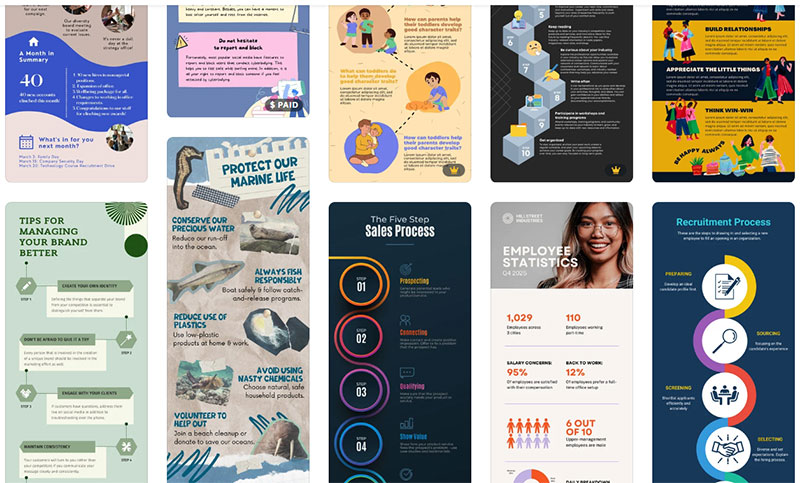
A feast for the eyes. Infographics turn complex data into easily digestible, visually enticing pieces. Think charts, graphs, and clever designs.
Tools like Canva make it easier than ever to create infographics that not only inform but also mesmerize. Perfect for social media marketing and brand storytelling.
Ebooks
Long-form content that screams authority. Ebooks are your ticket to showcasing expertise. They take dedication but reward you with leads and boosted credibility.
Selecting the Right Formats for Your Audience
Matching content types to audience preferences
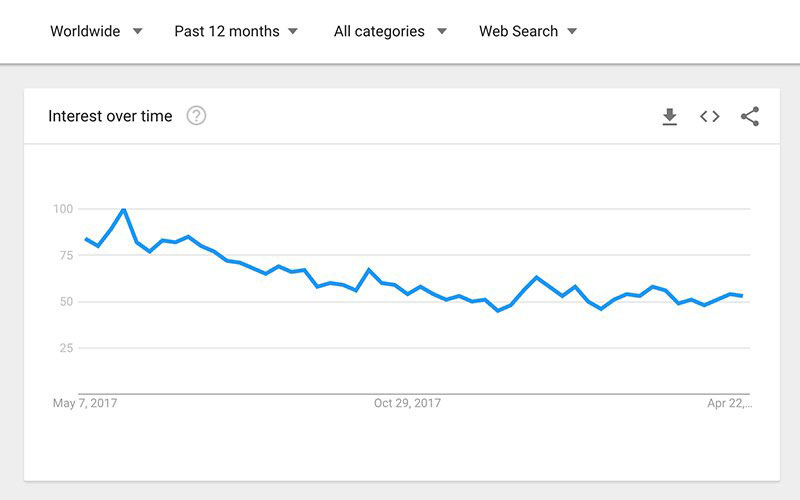
You can create the most dazzling videos or compelling blogs, but if they don’t resonate with your audience, it’s all moot.
Match content types to what your audience craves. Use surveys, social media insights, and Google Trends to decode preferences. If they love videos, give them video marketing gold. If they devour long reads, blogs and ebooks should be your go-to.
Leveraging strengths and resources
The game isn’t just about creating content but creating it smartly. Leverage your strengths and resources. Is your team great at storytelling? Lean into blog posts and case studies.
Do you have mad video-editing skills or an internal studio? Videos should be your flagship. Use Trello or CoSchedule to manage and allocate resources effectively.
Finding and Prioritizing Content Ideas
Brainstorming Techniques
Unleashing a torrent of creativity requires the right environment and tactics. It’s the fuel that powers your digital content creation engine.
Team brainstorming sessions
Gather the tribe.
Unshackle your team’s minds—yes, even those in finance have golden ideas sometimes.
Whiteboards become battle zones of Post-it notes. Ideas clashing, merging, being torn apart, rebuilt. It’s chaotic brilliance. Tap into everyone’s unique perspective.
Use tools like Trello to collect and organize the explosion of thoughts. You never know where the next viral blog post or engaging video concept might come from.
Customer feedback and questions
Got a question?
Great—turn it into content.
Customer feedback and questions are like breadcrumbs leading to content gold. Dive into customer emails, support tickets, and social media inquiries.
What are they itching to know? What’s confusing them? This intel is pure content fodder. A single, well-answered question could fill a detailed blog post or an engaging podcast episode.
Tools for Content Ideation
The right tools make the process seamless. It’s like having a magnifying glass to search for content gems.
Keyword research tools
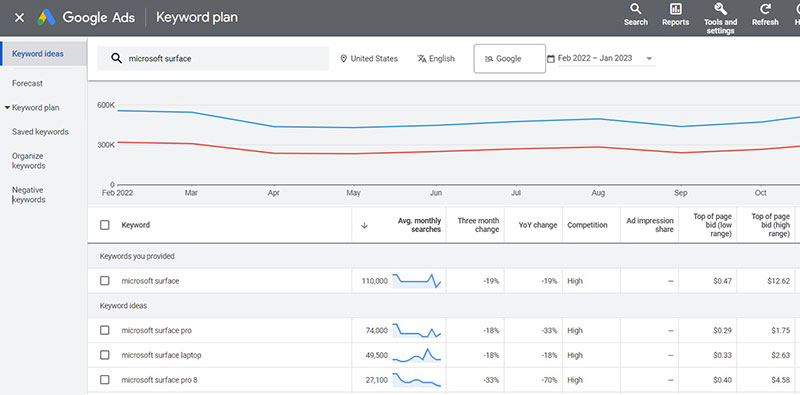
Every SEO strategist’s secret weapon. Keyword research tools like SEMrush, Ahrefs, and Google Keyword Planner are indispensable.
These tools reveal the search terms your audience is using, uncovering the exact phrases and keywords where there’s untapped potential. It’s like eavesdropping on their inner thoughts.
Competitor analysis
Keep your friends close and your competitors closer. Competitor analysis is essential. Dive into their content using BuzzSumo or Ahrefs Content Explorer.
What topics are they dominating? Where are their gaps? You don’t want to just match them—you want to outshine them. Identify what works and do it better.
Prioritizing Content Topics
Not all ideas are created equal. Some will explode with potential, others will fizzle out. Prioritization is key.
Potential impact and reach
Choose your battles wisely.
Prioritizing content topics based on potential impact and reach means putting effort where the ROI is highest.
Use insights from Google Analytics to identify high-traffic topics.
What gets your audience buzzing? What elicits the most engagement? Aim for the bullseye by focusing on topics that will make a splash.
Alignment with goals
And remember, it’s not just about loud voices but meaningful conversations.
Ensure topics align with your overarching goals. If your aim is brand awareness, choose subjects that showcase your expertise and broad appeal. If it’s lead generation, create content that draws them in with promises of deeper insights and practical solutions.
Aligning every piece with your strategic goals keeps your content efforts purposeful and potent.
Creating a Content Calendar
Importance of Planning
Without a plan, content is chaos.
Like trying to cook a gourmet meal without a recipe. Planning transforms your content strategy from a series of ad-hoc posts into a cohesive symphony.
Ensuring consistent publishing
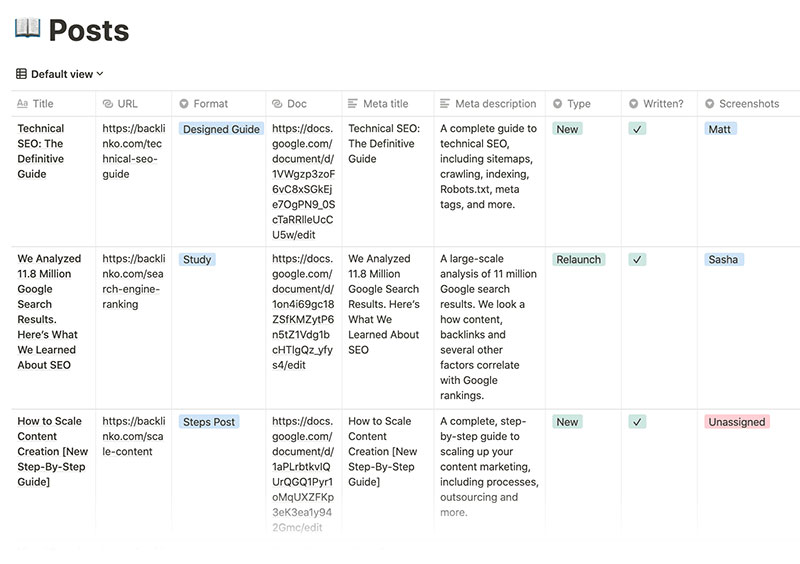
Consistency is king. Your audience craves regularity—whether it’s blog posts on Mondays, podcasts on Wednesdays, or eye-catching social media posts on Fridays.
Planning ensures you keep that rhythm, nurturing a loyal audience that knows exactly when to tune in for their next content fix. No awkward silences, no missed beats.
Managing resources and timelines
Time is a tyrant, resources are finite. Managing resources and timelines means you’re not scrambling at the last minute or overworking your team to meet impossible deadlines.
Use Trello or CoSchedule to map out every task, every deadline. Or whatever tool you like. I don’t care, I’m not your boss.
When everyone knows what’s expected and by when, efficiency skyrockets, and stress diminishes.
Elements of a Content Calendar
A well-structured content calendar is your blueprint.
The foundation on which your content marketing plan stands.
Topics and titles
Every great piece starts with a killer idea.
Your content calendar needs a clear outline of topics and titles—specific, intriguing, and tailored to your audience.
This is where brainstorming sessions, keyword research, and insights from tools like SEMrush come into play. Map it out, flesh it out, make it irresistible.
Publishing dates
Mark those calendars. Set publishing dates like they’re sacred. Each date represents a commitment to your audience—honor it.
Use Google Calendar or a dedicated editorial tool to plaster those dates where you can’t ignore them, ensuring nothing slips through the cracks.
Responsible team members
Every piece of content must have a champion. Assign responsible team members for each task, from ideation to execution.
Who’s writing that blog post? Who’s editing that video? Clear accountability ensures nothing falls into the abyss of the unfinished.
Tools for Content Scheduling
Modern problems require digital solutions. Let’s dive into the arsenal of tools that can make scheduling effortless.
Editorial calendar tools
Tools like CoSchedule and Trello are lifesavers. These editorial calendar tools visualize your entire content plan, making it easy to adjust dates, shuffle tasks, and maintain a high-level view of your strategy. Drag, drop, done.
Project management software
For when things get more complex, project management software steps in. Asana, Monday.com, or even Trello with all its fancy power-ups.
These platforms allow detailed task assignments, timeline tracking, and resource management. They keep your ship sailing smoothly, even in turbulent waters.
Promoting Your Content
Distribution Channels
Creating killer content is just half the battle.
Now let’s get that masterpiece out into the world through the right distribution channels.
Owned media (website, blog)
Your kingdom, your rules.
Owned media encompasses your website, blog, and anything you have full control over. It’s your turf. Regularly update your blog, keep your website engaging.
Use WordPress for seamless blog management, and remember, Yoast SEO will keep you on the right path.
Earned media (social shares, PR)
Earned media is where your content takes flight on the wings of others.
Think social shares, mentions, reviews, and good old PR. Social proof and virality happen here.
Your content gets shared, debated, and loved (or hated) without you paying a dime. Tools like BuzzSumo can track those precious shares.
Paid media (advertising)
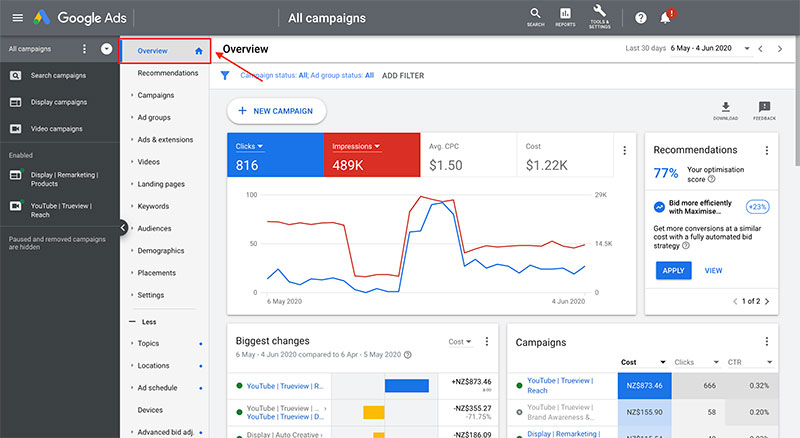
Sometimes, you have to pay to play. Paid media is all about sponsored content, PPC campaigns, and social media ads.
Use platforms like Facebook Ads and Google Ads to boost your reach. Place your content in front of your target demographics—whether it’s video marketing campaigns or native advertising placements.
Strategies for Effective Promotion
Distribution channels are just the avenues. Here’s how you drive through them effectively.
Social media marketing
Social media marketing isn’t just posting content—it’s starting conversations.
Utilize every platform’s strengths: Insta for visuals, Twitter for quips, LinkedIn for thought-leadership.
Use Hootsuite or Sprout Social to schedule posts, engage with followers, and track performance.
Go beyond posting—interact. Answer questions, join discussions, create polls, host Q&A sessions. Make your brand personable.
Email marketing
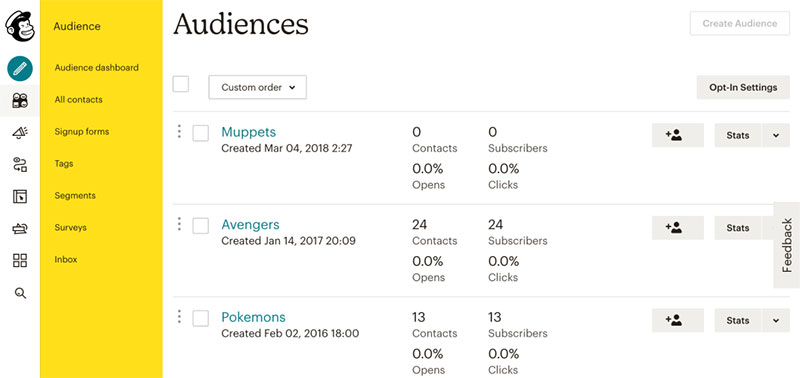
Email marketing is like a direct hotline to your audience. Craft compelling email newsletters, segment your lists, and personalize your messages.
Platforms like Mailchimp and HubSpot have robust tools for designing emails, automation, and analytics.
Share your latest blog posts, promote upcoming events, and provide value-rich content directly in their inboxes.
Influencer partnerships
Influencers are the modern-day celebrity endorsements, offering authenticity and reach. Identify influencers whose audience aligns with your brand.
Partner up for shout-outs, guest posts, or collaborative projects.
Whether it’s a micro-influencer in a niche community or a social media star, leverage their influence to amplify your message. Tools like BuzzSumo can help identify key influencers in your industry.
Monitoring and Measuring Performance
Key Performance Indicators (KPIs)
| KPI | Description | Measurement Methods | Example Tools |
|---|---|---|---|
| Website Traffic | The total number of visitors to your website. | Page views, unique visitors, sessions | Google Analytics, SEMrush, Ahrefs |
| Engagement Rate | The level of interaction your content receives. | Likes, comments, shares, retweets, time on page, pages per session | Google Analytics, Facebook Insights |
| Conversion Rate | The percentage of visitors who take a desired action, such as filling out a form or making a purchase. | (Conversions / Total Visitors) * 100 | Google Analytics, HubSpot, Marketo |
| Bounce Rate | The percentage of visitors who leave your website after viewing only one page. | (Single-page sessions / Total Sessions) * 100 | Google Analytics |
| Average Session Duration | The average amount of time visitors spend on your website during a single session. | Total Duration of All Sessions / Total Number of Sessions | Google Analytics |
| Lead Generation | The number of new leads generated through your content marketing efforts. | Number of new leads, lead quality score | HubSpot, Marketo, Salesforce |
| Cost per Lead (CPL) | The average cost to generate a new lead. | Total Cost of Campaign / Number of Leads Generated | HubSpot, Marketo, Salesforce |
| Return on Investment (ROI) | The profitability of your content marketing efforts. | (Revenue Generated from Content – Cost of Content) / Cost of Content * 100 | Google Analytics, HubSpot, SEMrush |
| Customer Acquisition Cost (CAC) | The cost associated with acquiring a new customer through content marketing. | Total Cost of Campaign / Number of Customers Acquired | HubSpot, Marketo, Salesforce |
| Customer Lifetime Value (CLV) | The projected revenue a customer will generate during their lifetime. | Average Purchase Value * Purchase Frequency Rate * Customer Lifespan | HubSpot, Salesforce |
| Email Open Rate | The percentage of recipients who open your email campaigns. | (Emails Opened / Emails Sent) * 100 | Mailchimp, HubSpot, Marketo |
| Click-Through Rate (CTR) | The percentage of people who click on a link in your email or ad. | (Clicks / Impressions or Emails Sent) * 100 | Google Analytics, Mailchimp, HubSpot |
| Social Media Reach | The total number of unique users who have seen your social media content. | Impressions, reach | Facebook Insights, Twitter Analytics |
| Backlinks | The number and quality of inbound links pointing to your website. | Number of backlinks, domain authority of linking sites | Ahrefs, SEMrush, Moz |
| SEO Keyword Rankings | The position of your website in search engine results pages for specific keywords. | Search engine ranking positions | Ahrefs, SEMrush, Google Search Console |
| User Retention Rate | The percentage of users who continue to interact with your content over time. | (Number of Returning Users / Total Number of Users) * 100 | Google Analytics, HubSpot |
| Customer Satisfaction (CSAT) | The level of satisfaction customers have with your content and overall brand experience. | Surveys, feedback forms, Net Promoter Score (NPS) | SurveyMonkey, Qualtrics, HubSpot |
| Content Shares | The number of times your content is shared on social media platforms. | Shares, retweets, reposts | Facebook Insights, Twitter Analytics |
In the wild jungle of content, numbers are your survival guide.
KPIs are the signposts that lead you out of the thicket and onto the path of effective content.
Traffic and engagement metrics
Every click, every scroll, every precious second a user spends on your site—they all matter.
Measuring traffic and engagement metrics means tracking visitors, page views, bounce rates, and time on site.
Google Analytics, anyone? It’s your secret weapon; it shows you where the eyes go, what snags attention, and what falls flat.
Conversion rates
The sweet nectar of the digital age. Conversion rates turn interest into action.
Whether it’s getting readers to sign up for an email newsletter, download an ebook, or make a purchase, watching conversion rates is crucial.
Efficiency is king. Tools like HubSpot will help you see how your content actually drives results.
Social media metrics
Beyond likes and shares. Dig deeper—engagement rate, click-through rate, shares, and comments. These social media metrics tell you if your audience just saw your post or got involved.
Tools like Hootsuite and Buffer give you the data without the fuss.
Tools for Tracking and Analysis
Tech tools are to a content marketer what a compass is to an explorer. They point the way.
Google Analytics
The granddaddy of them all. If you’re not using Google Analytics, are you even measuring?
From session duration to source/medium data, it’s the omnipotent eye over all your digital realms. Track user behavior, set goals, and create custom reports. Your content’s best friend.
Social media analytics tools
Platforms like Sprout Social and BuzzSumo give granular details: post performance, audience demographics, optimal posting times.
They decode the social signals into actionable insights. Know when to post, what to post, and how your audience reacts.
Content performance platforms
Performance platforms like Ahrefs, SEMrush, and Moz provide holistic views. They measure backlinks, keyword rankings, organic traffic, and more.
These platforms are crucial for understanding the full impact of your SEO and content efforts.
Adjusting Strategy Based on Insights
Data without action is just clutter. Use those juicy insights to refine, improve, adapt.
Iterative improvements
Continuous tweaking defines successful content strategies. A/B testing headlines, shifting posting schedules, tweaking call-to-actions—iterative improvements make the difference.
It’s a ballet of testing and tweaking. Trello or Asana can help manage these changes effectively.
Responding to performance data
Don’t just collect data—respond to it. If a blog post type consistently underperforms, pivot. If a video marketing campaign goes viral, double down.
Being agile and responsive, using tools like CoSchedule or Buffer to manage shifts, keeps your strategy aligned with audience behavior.
FAQ On Developing A Content Marketing Strategy
What is the first step in developing a content marketing strategy?
Understanding your audience is paramount. Know who you’re talking to before you dive into content creation. Develop detailed customer personas.
Research their needs, preferences, and pain points. Tools like Google Analytics and social media insights can help uncover this critical data.
How do you create a content calendar?
Start with identifying key dates, events, and campaigns. Use tools like Trello or Asana to organize your blog posts, webinars, and social media updates.
Ensure consistency and adaptability. A content calendar isn’t set in stone; it’s a living document that guides your strategy.
What metrics should you track to measure success?
Focus on engagement, conversion rates, and bounce rates. Use Google Analytics for detailed insights. Track how your SEO content performs.
Pay attention to user interactions with emails, blogs, and social media posts. Metrics provide tangible evidence of what’s working.
How important is keyword research?
Invaluable. Keywords drive SEO content and help in understanding what your audience is searching for. Tools like Ahrefs or Moz make this easier.
Keyword research allows you to create relevant, optimized content. It’s not just about volume but also context.
How can you effectively distribute content?
Leverage email marketing with tools like Mailchimp. Use social media platforms like Facebook and LinkedIn.
Collaborate with influencers via BuzzSumo. Content syndication amplifies reach. Effective distribution ensures your content reaches the right audience at the right time.
What’s the role of user-generated content?
It’s gold. Authentic and relatable, it fosters trust and community. Integrate user-generated content into your strategy.
Showcase testimonials, reviews, and social mentions. Platforms like Instagram and Facebook are ripe for harvesting this kind of content.
How do you optimize content for search engines?
Use Yoast SEO to fine-tune on-page elements. Include LSI keywords like social media marketing and content audit.
Ensure your content meets Google’s E-E-A-T guidelines: Expertise, Authoritativeness, and Trustworthiness. Structured data, like schema.org markup, enhances visibility.
What tools are essential for content marketing?
Google Analytics for metrics. Hootsuite for social media management. SEMrush for comprehensive SEO insights. BuzzSumo for influencer identification.
WordPress for content management. Canva for design. These tools are indispensable for executing a successful content strategy.
How often should you update your content?
Regularly. Audit your existing content using tools like Google Search Console. Update blog posts and articles with fresh data.
Refresh visuals using Adobe Creative Cloud. Regular updates keep your content relevant and aligned with current trends.
Why is a content distribution plan important?
A content distribution plan ensures your hard work gets noticed. Using tools like Mailchimp or Buffer, you can schedule and automate releases.
It amplifies reach, driving engagement and conversions. Without a solid plan, even the best content can go unnoticed.
Conclusion
Crafting a compelling, effective approach to developing a content marketing strategy isn’t just a task, it’s a dynamic journey.
When building a content calendar, integrating elements like content audit, keyword research, and SEO content creation positions you for success. Focused content distribution across platforms like Facebook, LinkedIn, and email marketing tools like Mailchimp ensures your message reaches the right eyes.
Let’s not forget the invaluable insights from Google Analytics that drive informed decision-making. By weaving user-generated content and leveraging influencer marketing, you provide authentic and relatable material for your audience. Utilizing tools like BuzzSumo, SEMrush, and Hootsuite can further refine and amplify your reach.
Ultimately, your strategy should be adaptive, backed by continuous analysis and updates. Tune into metrics and let data be your guide.
By mastering these steps, you ensure every piece of content resonates, engages, and converts—turning mere plans into thriving, actionable realities.
If you liked this article about developing a content marketing strategy, you should check out this article about the benefits of content marketing.
There are also similar articles discussing content marketing goals, content marketing personas, content audit, and content audit checklist.
And let’s not forget about articles on how to conduct a content audit, how to create a content plan, content marketing KPIs, and content marketing mistakes.





